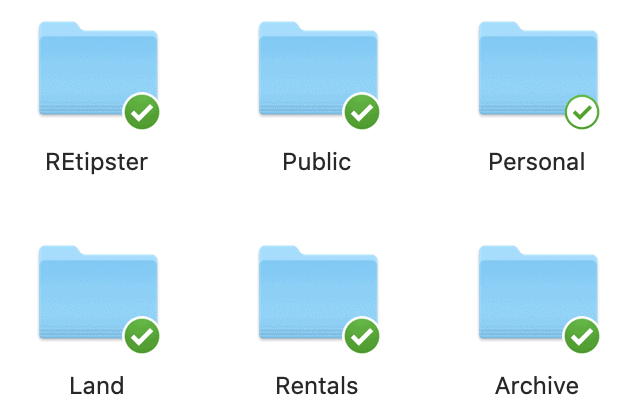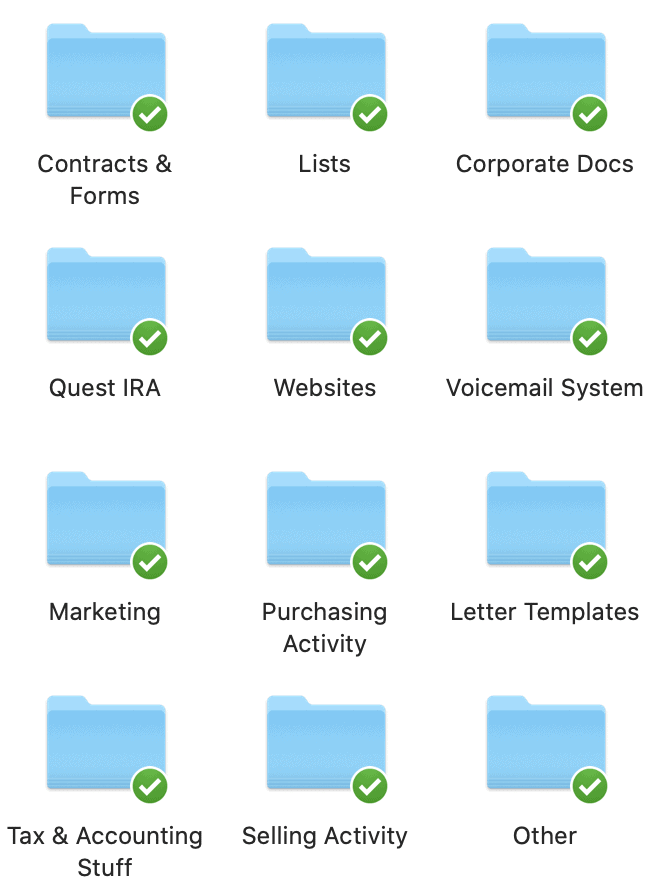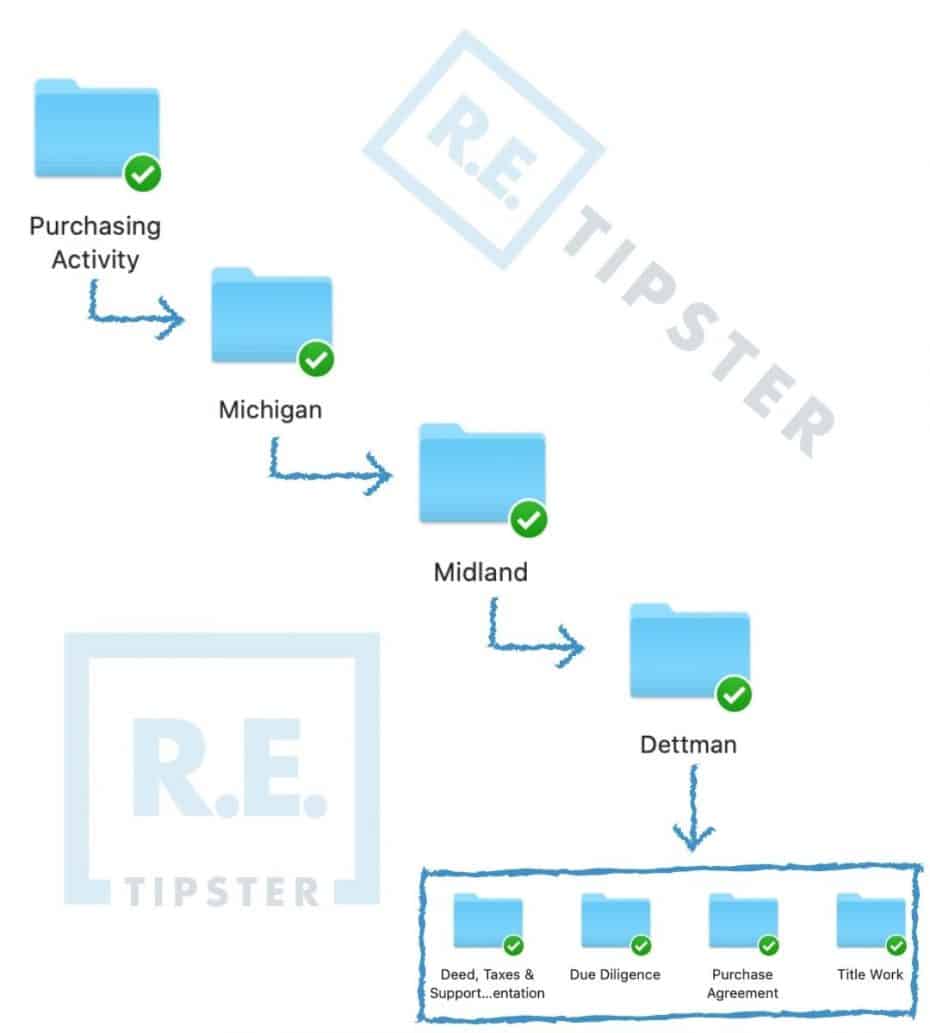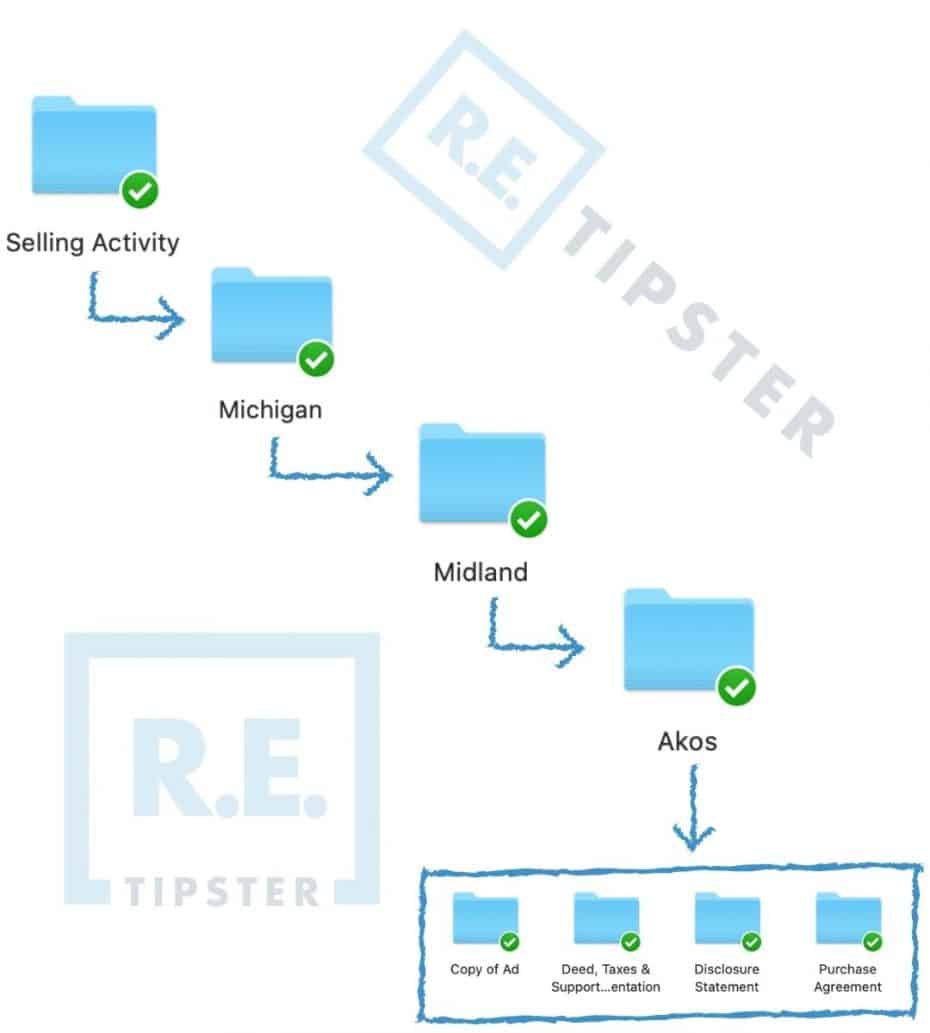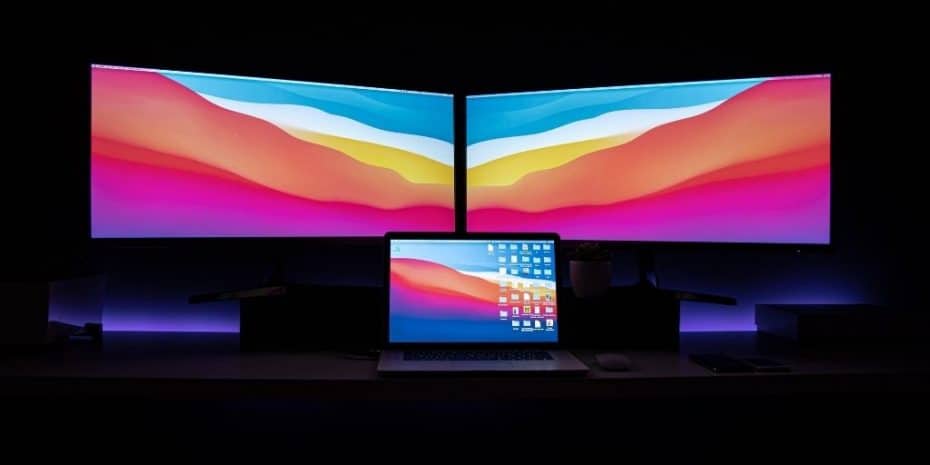REtipster features products and services we find useful. If you buy something through the links below, we may receive a referral fee, which helps support our work. Learn more.
If you haven't figured it out yet, organization (i.e. – one's ability to keep things in order) is an extremely important aspect of any real estate business.
It doesn't matter if you're an investor, agent, broker, property manager, or speculator – your ability to:
- Maintain control of your data
- Keep your information in one place (without mixing everything up)
- Employ a logical flow of information
- Find what you're looking for in seamless fashion
will have a massive impact on your level of effectiveness in this business.
This isn't something that comes naturally to everyone. It took me about a year of fumbling around with different organization methods before I finally settled on the basic setup I use today.
A Brief Overview Of My System

For many reasons, Dropbox is an amazing tool, and it's not the only option out there (Google Drive is another popular and free option that many people love). The point is to use something that allows you to store files for free, sync folders and files between multiple computers and devices, and easily share documents as needed.
Without this free resource, many things would be harder, and I would probably have piles of paper all over my house.
The ability to retrieve information on your iPhone or Droid at the drop of a hat (and all for FREE, I might add) is a huge convenience you ought to take advantage of.
How I Organize My Files With Dropbox
When I open my Dropbox account, I see six big folders. Each folder contains a massive amount of data that constitutes my entire life.
Within the “Land” folder is the bulk of my real estate business (all of the ongoing buying and selling activity for my land investing business). The folders inside my primary real estate business look like this:
There are many ways to keep your real estate business in order (depending on what you do). When I started my business, my biggest problem was getting overwhelmed by the volume of offers I sent out.
I created a folder called “Purchasing Activity” to keep track of all the offers I had sent out, regardless of whether I got the deal. I decided to set it up like this:
Purchasing Activity > State > County > Seller Name > Documentation
And here's a better visual representation of how it looks
Similarly, on the selling end, once a property is sold and I have to keep track of all my listings, pictures, contracts, deeds, title work, and more, I organize my files like this:
Selling Activity > State > County > Buyer Name > Documentation
And here's a visual representation of how this part looks
As you can see, it's not rocket science. Still, it did (surprisingly) take a lot of mental energy to nail down an organizational system that would be consistent, logical, and easy for me to follow. I could have tried organizing my properties by parcel number, address, or some other bizarre method, but these other ways didn't seem to click in my brain, so I landed on the above structure.
What This System Doesn't Do
The primary goal behind this kind of organizational structure is to keep me from going insane, with papers and files flying all over the place and no sensible way to find the things I need.
This isn't intended to automate anything or allow you to run your whole business remotely with one click (plenty of other expensive and complicated software tools out there can help you achieve that).
I'm trying to show you how I've been able to put things in their proper place so I'm never wondering where or why things are missing. When I'm following this format, everything makes sense.
How To Go Paperless
As you've probably guessed, going paperless is an important component of my filing system.
When I started thinking about how to do this, it seemed like implementing it would be a MAJOR pain. After giving it a shot, I was surprised it took about the same time (or less) as my old paper system.
All I had to do was run the hard documents through a scanner and drop them into the appropriate folders, and over time, it turned out to be a MUCH easier way to keep things in order. Probably the biggest plus was that it gave me instant access to almost anything I could think of, no matter where I was in the world (being able to pull things up on your phone is a huge convenience)!
And really…when you know your goal is to go paperless from the start, there are a lot of instances where you can eliminate the use of hard copies. These days, you can sign almost everything digitally with tools like PandaDoc and save documents directly from the internet as pdf files (rather than printing them off).
Incorporating tools like Canva's PDF to JPG converter into your paperless workflow can enhance document accessibility and sharing. This free, user-friendly online tool lets you upload a PDF and quickly convert it into high-quality JPG images without additional software installations.
If you're finding yourself buried under a mountain of paper files (or if you can't stop other people from relying on hard copies), I would recommend a couple of reasonable investments to make this process significantly easier over the long haul.
1. All-In-One Scanner/Printer/Copier/Fax Machine
I bought the Brother MFCL2717DW. It works like a champ and does everything I need it to do.
Unfortunately, many name-brand printers are total garbage. I can vouch for this one if you're unsure what kind of unit to get.
2. A Large Monitor OR Two Side-By-Side Monitors
You can certainly survive with most normal computer monitors. Still, without a larger surface area (one that allows you to pull up multiple documents on one screen or two screens), a paperless system will be much more cumbersome than it needs to be.
To be honest, it's not even a bad idea to get two or even three monitors if you can swing it (especially if documentation is a major part of your business). Still, I'd say at the very least; you should have at least one 24-inch monitor on hand (this is what I have, and it suits me just fine).
3.PDF Editing Software
This is more of a luxury item, but if you're serious about going paperless, it is very helpful to have software that allows you to edit PDF documents without having to print them off and re-scan them.
If you're using a Mac, the native software will allow you to do most of the basic edits you'll need to do, with the flexibility to edit, delete, add, insert, rotate, highlight, and recognize text (among many other things) on the pages you scan into your system.
If you're using Windows, get yourself a copy of Adobe and pay for the basic functionality you need.
The bottom line is that if you need to alter a PDF in a way you can't do directly on your computer, find whatever software you need and buy it. It'll be worth the investment long-term.
Figure Out What Works For You
As I said, there is no definitive right or wrong way to do this. This is just my way of keeping my business documentation in order. This system made sense to me and has worked well for the past decade.
As you consider this, feel free to apply any of these ideas to your system—and if you think you've got a better way of organizing your files, let me know! I'm always curious to hear about new ways of improving my system.





